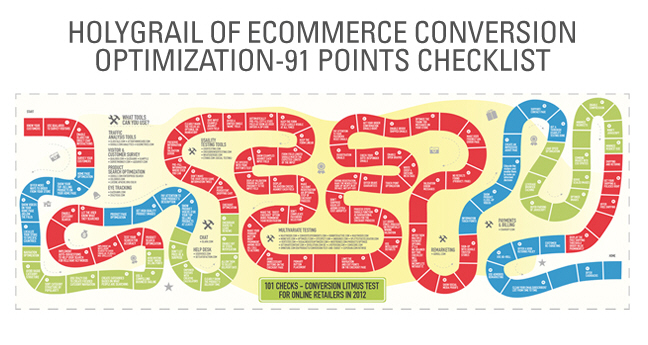Transforming a curious visitor into a paying customer depends on a variety of elements including:
- The amount of pages a customer must traverse until they reach the order confirmation page
- Whether newsletters are opt-out or opt-in
- Whether customers are forced to register for accounts prior to submitting payment
- Cumbersome or inaccurate address validations
This infographic from CueBlocks, an agency that specializes in ecommerce optimization, identifies a staggering 91 elements that ecommerce professionals can improve, resulting in better conversion rates. While these elements are found throughout the entire buying cycle, from product awareness to customer retention, the largest section of this infographic is dedicated to the checkout process, where the customer is “most vulnerable to abandonment.”

Over and over again, ecommerce pros are encouraged not to burden their visitors by making them repeatedly type in their information. So, for example, billing and delivery information should be combined into one field unless the user specifically requests a different billing option.
However, if your product is geared toward business customers, then the practice should be reversed. For B2B customers, the product is often used by one department in an organization while the billing is handled by a separate department.
Another suggestion from this infographic is that the fields for “First Name” and “Last Name” should be combined into one element. I rarely, if ever, see this practice implemented anywhere on the web and would like our readers to comment on this piece of advice.
Aside from not burdening your customers with too many information fields, checkout processes should minimize the amount of paths that lead away from the cart. During the primary election season in the US, we noted that Barack Obama was very careful about this practice when it came to his shopping cart landing pages, while his opponents in the Republican party did everything they could to distract visitors away from conversion.
The end of the checklist properly notes that knowledge is one thing; acting on that knowledge is another. The responsibility for optimizing every single element on this checklist will span across many different departments of an organization, from marketers to developers to C-level executives. Ultimately, internal communication is key to implementing this advice properly.